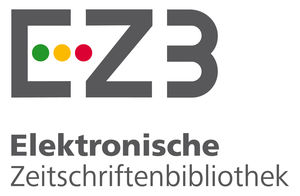Algumas considerações sobre as construções do conjunto dos números reais
Uma necessidade para um modelo epistemológico de referência?
DOI:
https://doi.org/10.23925/1983-3156.2024v26i3p493-514Palavras-chave:
Números reais, Evolução histórica, Epistemologia, Didática, Modelo epistemológico de referênciaResumo
O objetivo deste artigo é apresentar alguns elementos sobre o conjunto dos números reais e uma visão sintética das construções rigorosas desse conjunto no século XIX, que se tornaram um requisito para a aritmetização da análise matemática com os trabalhos de Cauchy e Weierstrass. Analisaremos algumas considerações didáticas concernentes ao ensino do conjunto dos números reais no ensino médio e no início da universidade. Esperamos que este artigo possa fornecer subsídios para a elaboração de modelos epistemológicos de referência (MER) para estudos e pesquisas dos conteúdos de funções, limite e continuidade, entre outros.
Referências
Artigue M. (1990). Épistémologie et didactique, Recherche en Didactique des Mathematiques, vol 2.3, pp. 241-286.
Blanton, M. L.; Kaput, J. (2004). Elementary Grades Students' Capacity for Functional Thinking. International Group for The Psychology of Mathematics Education, v. 2, 2004, pp. 135-142.
Bronner, A. (1997). Étude didactique des nombres réels : idécimalité et racine carrée. Education. Joseph Fourier. Université Joseph Fourier (Grenoble 1) (UJF), Grenoble, FRA. Français. NNT: tel-03797170.
Burigato, S.M., Rachidi, M. (2023). O uso da definição formal de limite finito para funções reais: uma proposta para o ensino, Revista Sergipana de Matemática e Educação Matemática, v. 8 n. 3. https://doi.org/10.34179/revisem.v8i3.18348
Dhombres, J. (1978). Nombre, mesure, et histoire. Cedic - Nathan.
Euler, L. (1796). Introduction à l’Analyse Infinitésimale. Tome 1 / Léonard Euler; trad. du latin en français avec des notes et des éclaircissements par J. B. Labey (1752-1825). https://gallica.bnf.fr/ark:/12148/bpt6k3884z/f4.item#
Gascón, J. (2014). Los modelos epistemológicos de referencia como instrumentos de emancipación. EDUCACIÓN MATEMÁTICA, 25 años, Marzo de 2014. https://www.redalyc.org/pdf/405/40540854006.pdf
Georges, J. S. (1929). Functional thinking as an objective of mathematical Education. School Science and Mathematics, v. 29, n. 5, p. 601-608, 1929.
Houzel, C. (1979). « Histoire des mathématiques et enseignement des Mathématiques », Histoire des mathématiques et épistémologie, Bulletin inter IREM, n° 18, p. 3-6, 1979.
Job, P. (2023). Didactique et notion de limite. Vers un modèle épistémologique de référence (MER) partagé ? Conférence Didactique sur l’Analyse. INMA – UFMS, Campo Grande. Journée 3, Septembre 2023.
Margolinas, C. (1988). Une étude sur les difficultés d’enseignement des nombres réels. Petit x n.16, p. 51-66.
Monge, M. et Ruff, P. (1962), Ensembles et nombres, Librairie Belin, 1962.
Oudot, X., Le Théorème de Bolzano-Weierstrass, Culture Math. https://culturemath.ens.fr/
Rachidi, M.; Freitas, J. L. M. & Mongelli, M. C. G. J. (2020). Limite de funções de uma variável real com valores reais e generalizações.1ª edição. Campo Grande: Editora UFMS. Disponível em: https://repositorio.ufms.br/handle/123456789/3548.
Rachidi, M.; Burigato, S. M. M. S. & Mongelli, J. G. M. C. (2023). Conceitos Básicos para a Introdução ao Cálculo Diferencial e Integral, Editora UFMS. Disponível em: https://editora.ufms.br/livros-digitais-edital-ufms/
Rousselet, M. (2021), La belle histoire des Maths, ADAPT-Snes. De Boeck-Supérieur.
Schons, N-J. (1965). Éléments d'algèbre. 8e éd.; Procure.
Vergnac, M. et Durand-Guerrier, V. (2014), Le concept de nombre réel au lycée et en début de l’université: un objet problématique. Petit x, n, 96. pp. 7-28.
Weierstraß, K. Einleitung in die Theorie der analytischen Funktionen. Springer, 1988.
Downloads
Publicado
Como Citar
Edição
Seção
Licença

Este trabalho está licenciado sob uma licença Creative Commons Attribution-NonCommercial-NoDerivatives 4.0 International License.
Autores que publicam nesta revista concordam com os seguintes termos:- Autores mantém os direitos autorais e concedem à revista o direito de primeira publicação, com o trabalho simultaneamente licenciado sob a Licença Creative Commons Attribution que permite o compartilhamento do trabalho com reconhecimento da autoria e publicação inicial nesta revista.
- Autores têm autorização para assumir contratos adicionais separadamente, para distribuição não-exclusiva da versão do trabalho publicada nesta revista (ex.: publicar em repositório institucional ou como capítulo de livro), com reconhecimento de autoria e publicação inicial nesta revista.
- Autores têm permissão e são estimulados a publicar e distribuir seu trabalho online (ex.: em repositórios institucionais ou na sua página pessoal) a qualquer ponto antes ou durante o processo editorial, já que isso pode gerar alterações produtivas, bem como aumentar o impacto e a citação do trabalho publicado (Veja O Efeito do Acesso Livre).













